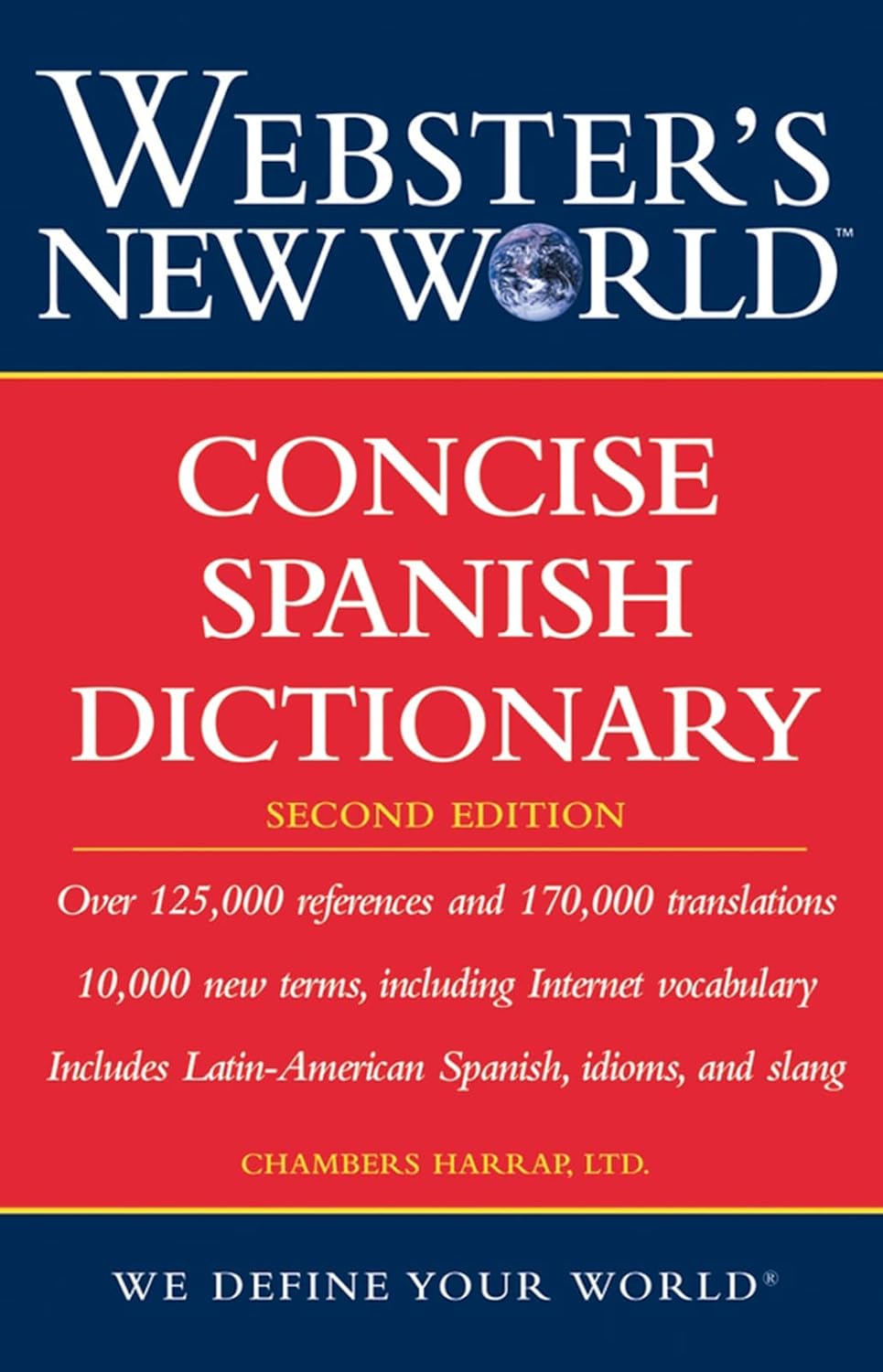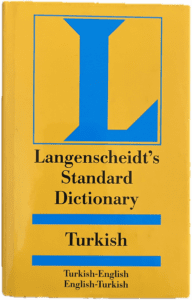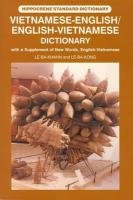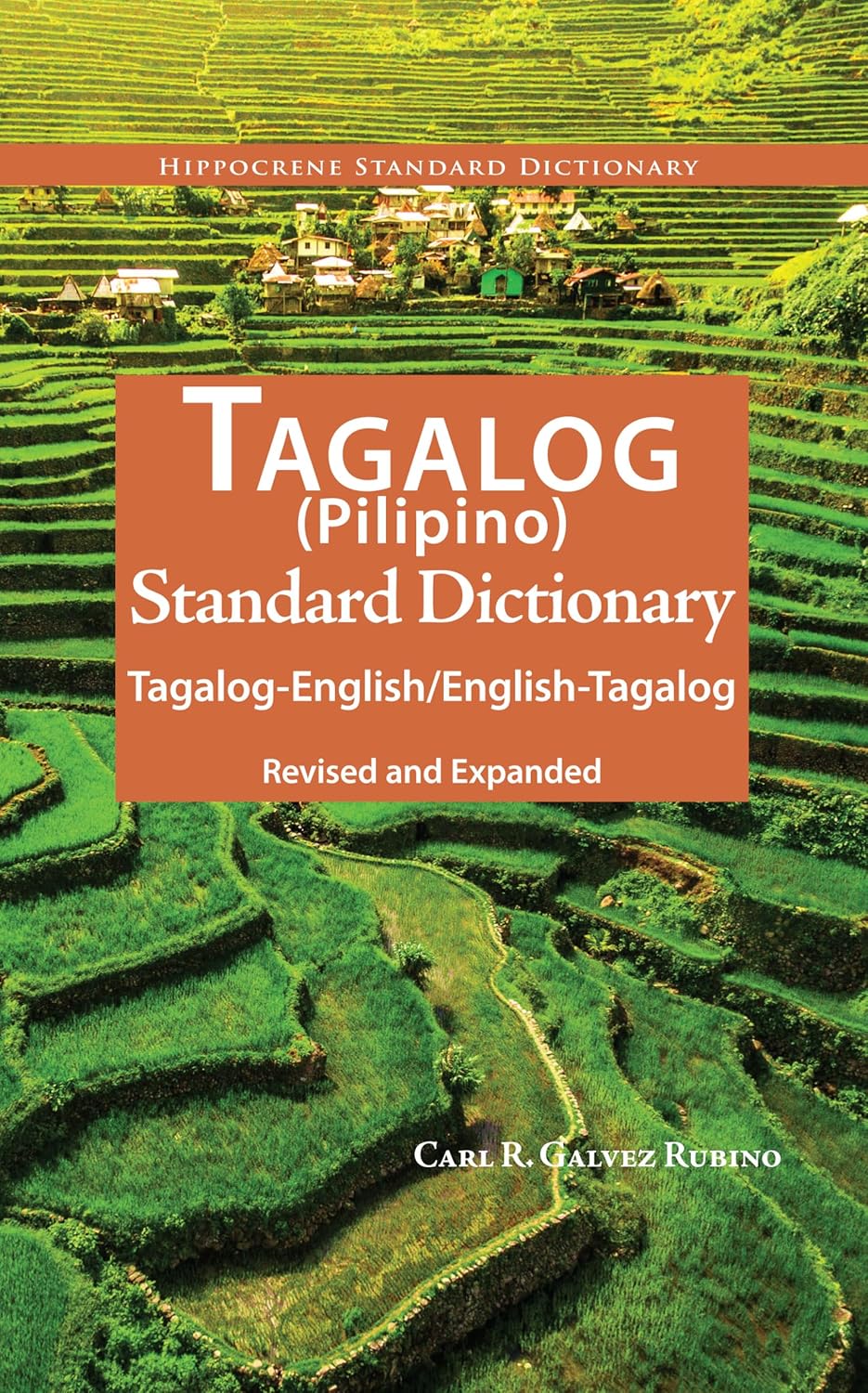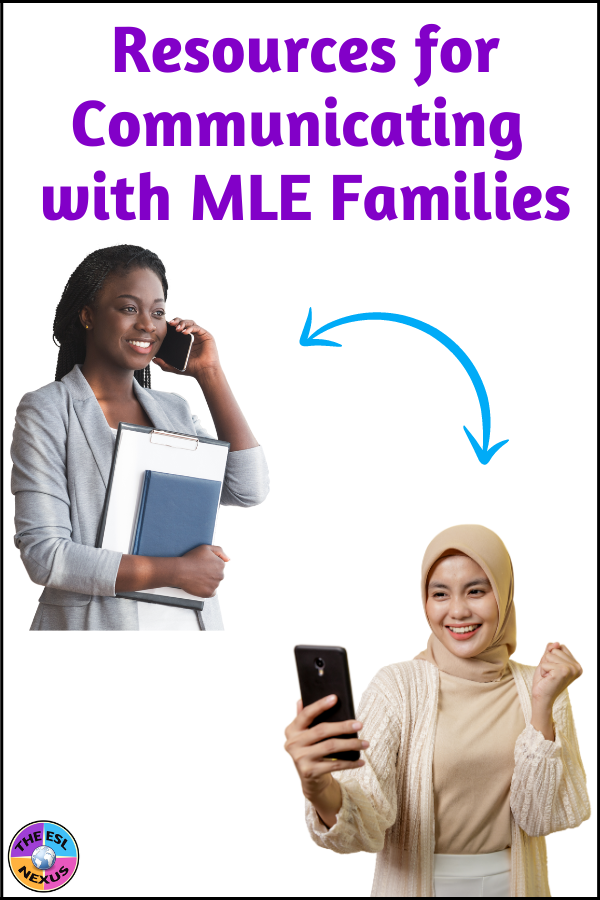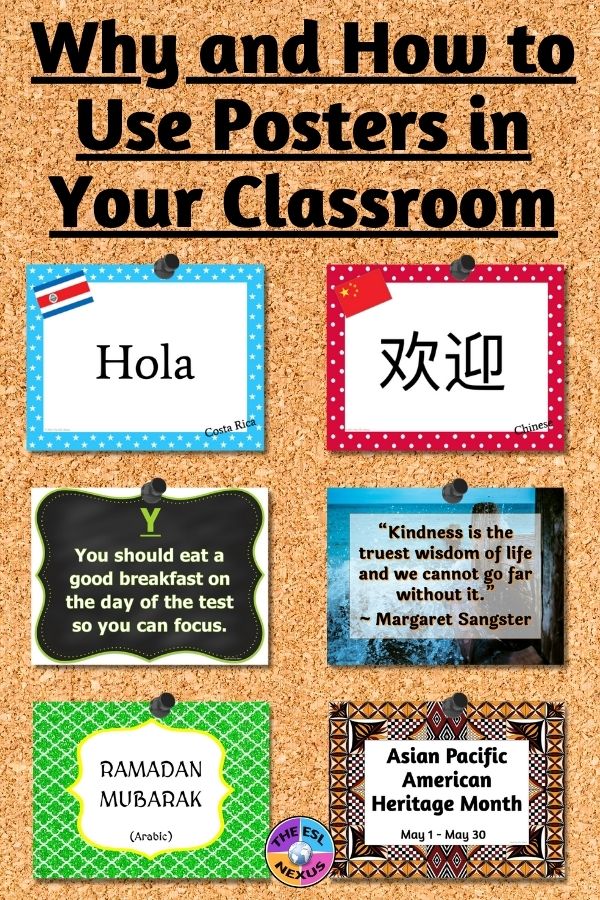Martin Luther King taught us that the color one’s skin is not important. Rather, it is what kind of person you are that matters. I think a correlation of this belief is that it does not matter where you come from or what language you speak — what’s important is that if you make your life in the United States, you should be able to speak whatever language you prefer.
 |
| Graphic By The ESL Nexus, from an image on Canva |
Today, on the holiday marking the birth of the civil rights icon, I would like to talk about using students’ native languages in school. This has been a controversial topic and I’d like to discuss why I think it is to ELLs’ benefit to allow them to use their first language.
Reasons for Using the Native Language in School
* You can explain things faster and consequently get more teaching done.
* You can explain things in more depth and therefore your students will comprehend the material better.
* It helps your students feel comfortable in the classroom, which enhances their learning.
* It lets your students communicate with their classmates, and possibly you and other staff people, from the very start.
* It lets your students demonstrate their understanding of concepts even when they don’t know the English words for them.
* You can get a better sense of what students know and don’t know about the topics being taught.
* It lets your students keep up with their native English-speaking peers while learning the English language.
* It lets other students know that ELL students are valuable members of your class community because they are integrated into all class activities from the beginning of their arrival in the class.
* It gives other students the chance to see an ELL as just another student and not as the “other.”
It’s worth pointing out some disadvantages to using the native languages of students, although I do not think they outweigh the advantages.
Reasons for Not Using the Native Language in School
* The teacher may not know the native language of all ELLs in the class so it can appear as if s/he is playing favorites with one language over another.
* It can take time away from instruction to stop and explain things in another language.
* It can foster dependency by ELLs on their native language instead of learning English.
* Other students may think ELLs are talking about them when using their native language, even though that’s rarely the case.
* It can be time-consuming to create instructional materials in other languages.
* It can create divisions or cliques in class or a lack of community if students sit together based on the languages spoken.
However, all the disadvantages listed above can easily be obviated by good classroom management. Even if you don’t know all the languages of your students, it’s not that difficult to learn a few words in each one, such as hello, thank you and good-bye. If you need to explain something in a student’s first language, you can do that by taking the student aside while the rest of the class is working on something.
To avoid creating dependency by waiting for translations, just translate judiciously, teach students how to figure out the meaning of unknown words, and use time-tested strategies for teaching academic concepts to ELLs. Make it clear to the whole class that when students are speaking a language other than English, it’s not because they are secretly talking about their classmates — it’s because they want to learn and that makes it easier for them.
You don’t have to create all your instructional materials in other languages! There are lots of resources available online and you can utilize other students to help convey concepts.
And be proactive about seating assignments; placing students who speak different languages together will foster English language learning but you may want to let students who share a language occasionally do small group work together, especially if there are lower proficiency level ELLs who would benefit from scaffolding like that.
Recommended Bilingual Dictionaries
I kept a shelf of dictionaries in my classroom. They included.English language dictionaries at various proficiency levels and also.bilingual dictionaries in the languages of my students. I let students use them whenever they didn’t know a word in English. I also used them if, after several attempts at explaining what a word meant, my students still didn’t understand. In addition, they were really useful in helping me communicate with my students’ families. Below are some of the dictionaries I used.
(This post contains affiliate links. That means that I make a small commission if you make a purchase but it’s at no additional cost to you. Thank you for your support!)
This Spanish dictionary was a life-saver!
My Japanese students found this dictionary really helpful.
My Turkish students and I all liked this dictionary. (This is the edition I used; there is a newer edition available now.)
I wished this dictionary included how to pronounce the Vietnamese words since it does that for the English words but otherwise, it was good.
I only ever had 1 Filipino student but I bought this dictionary and it was useful.
I love this dictionary! It’s a larger version of the dictionary I carried with me everywhere when I worked in China. This one has over 600 pages so it really isn’t pocket-sized but it is comprehensive. (Pictured below is a newer version than the one I had.)
Conclusion
My conclusion is that a sensible use of the native languages is most helpful for ELLs. Bilingual dictionaries support your students learning of English and they help you establish connections with your students and their families. So don’t hesitate to let your students use their native languages because doing so will actually facilitate their acquisition of the English language.
January 15, 2018

